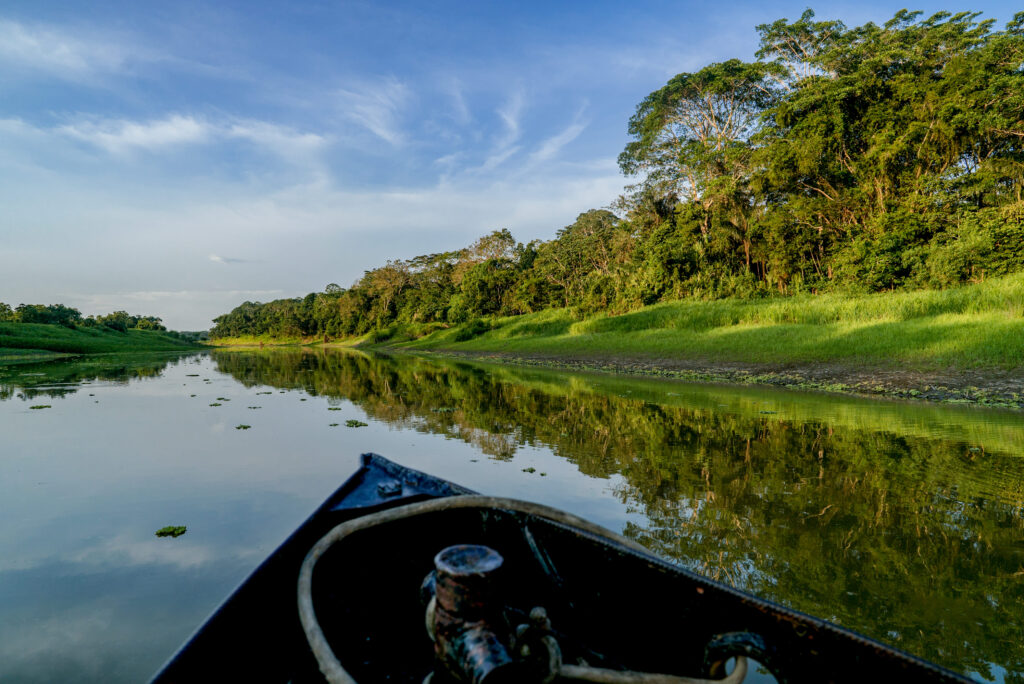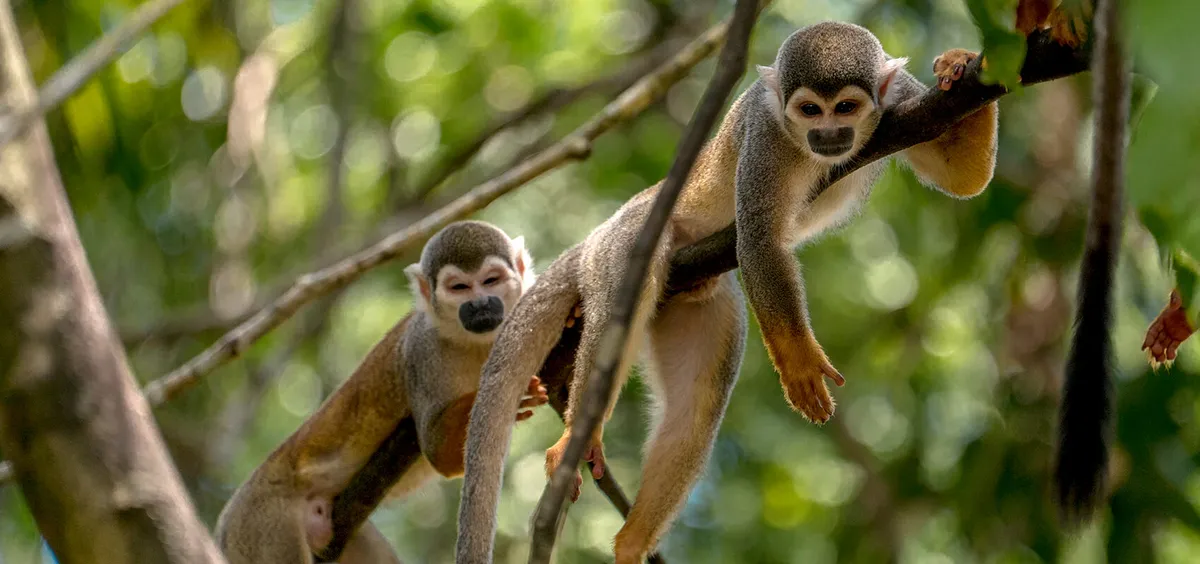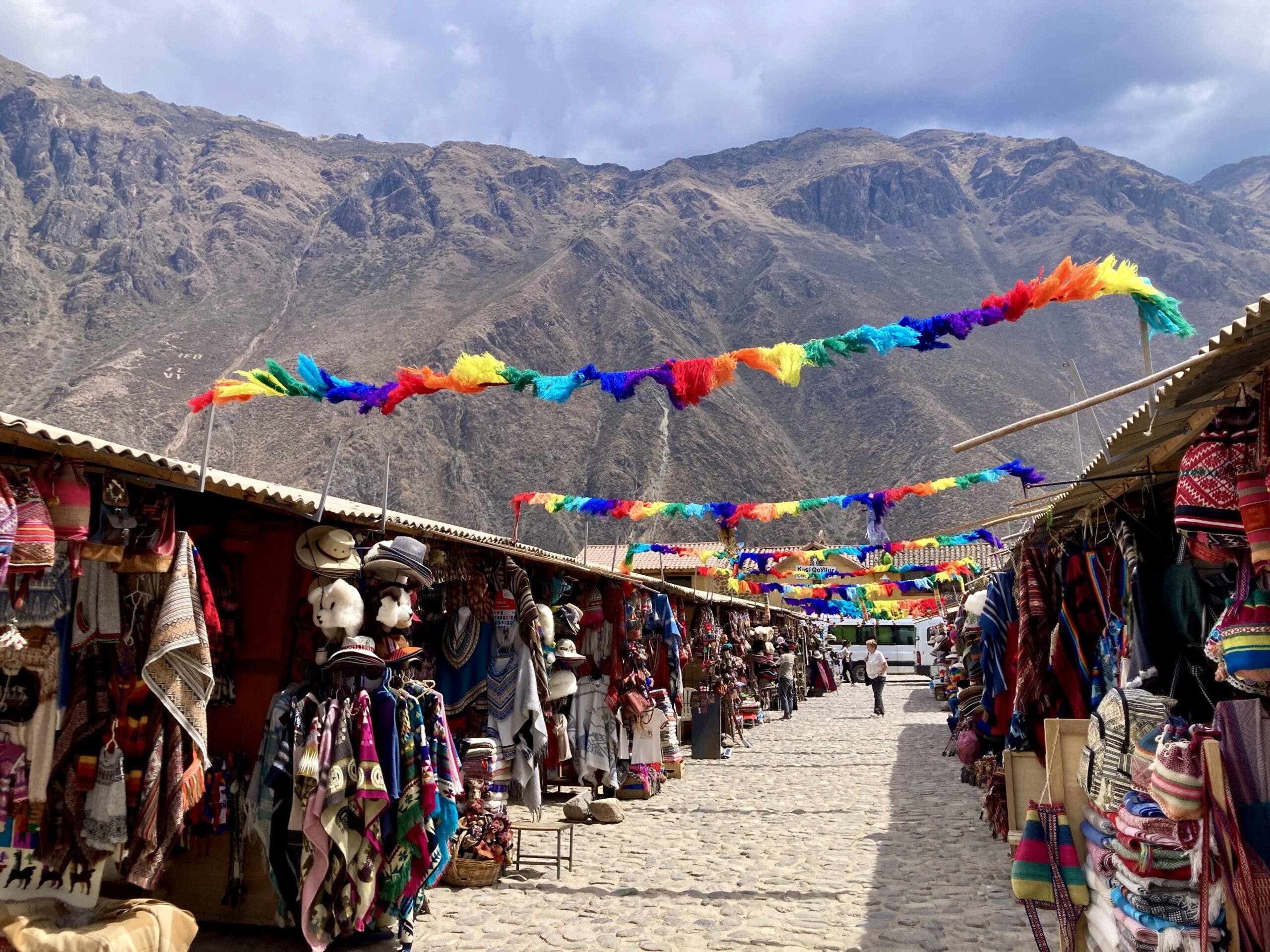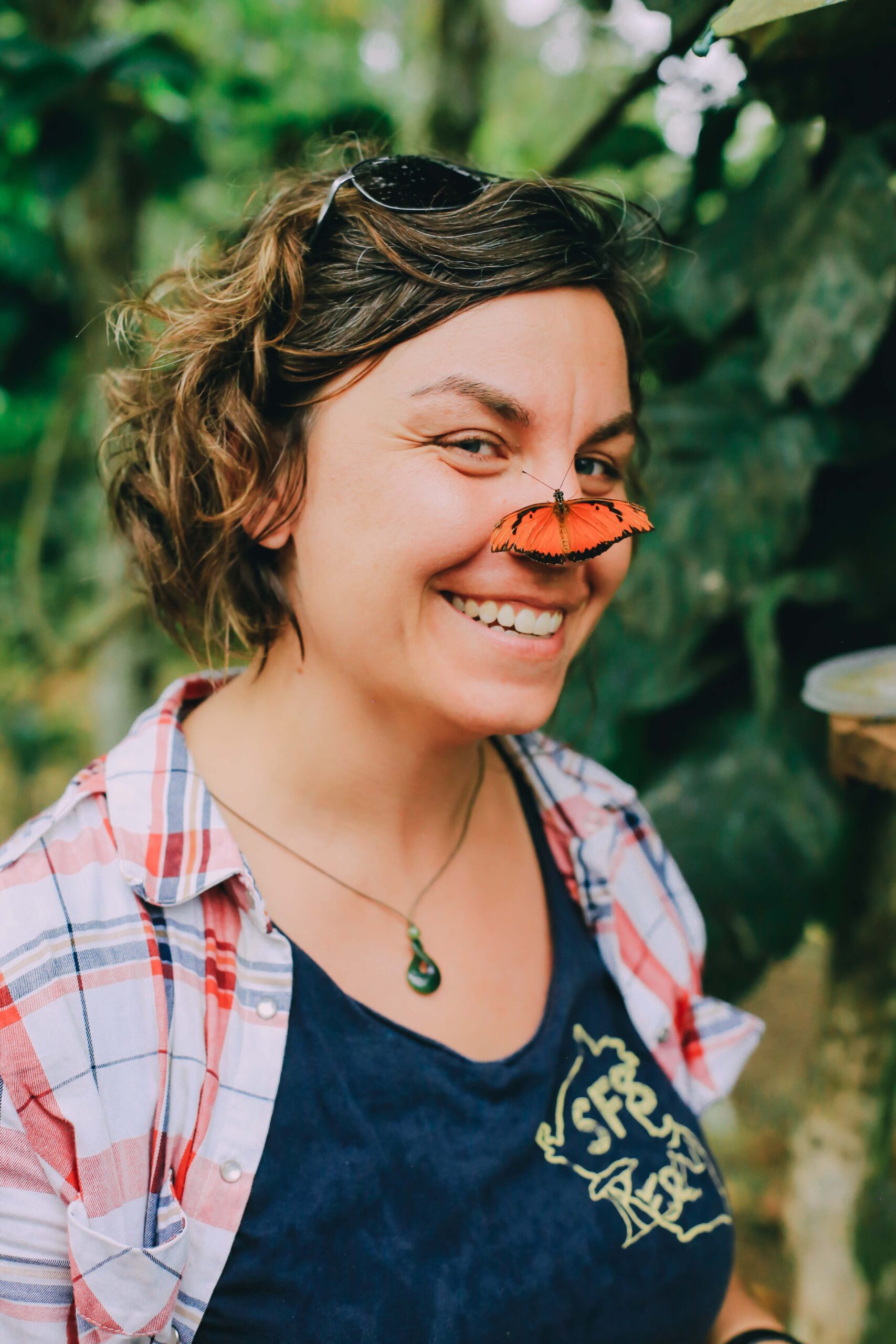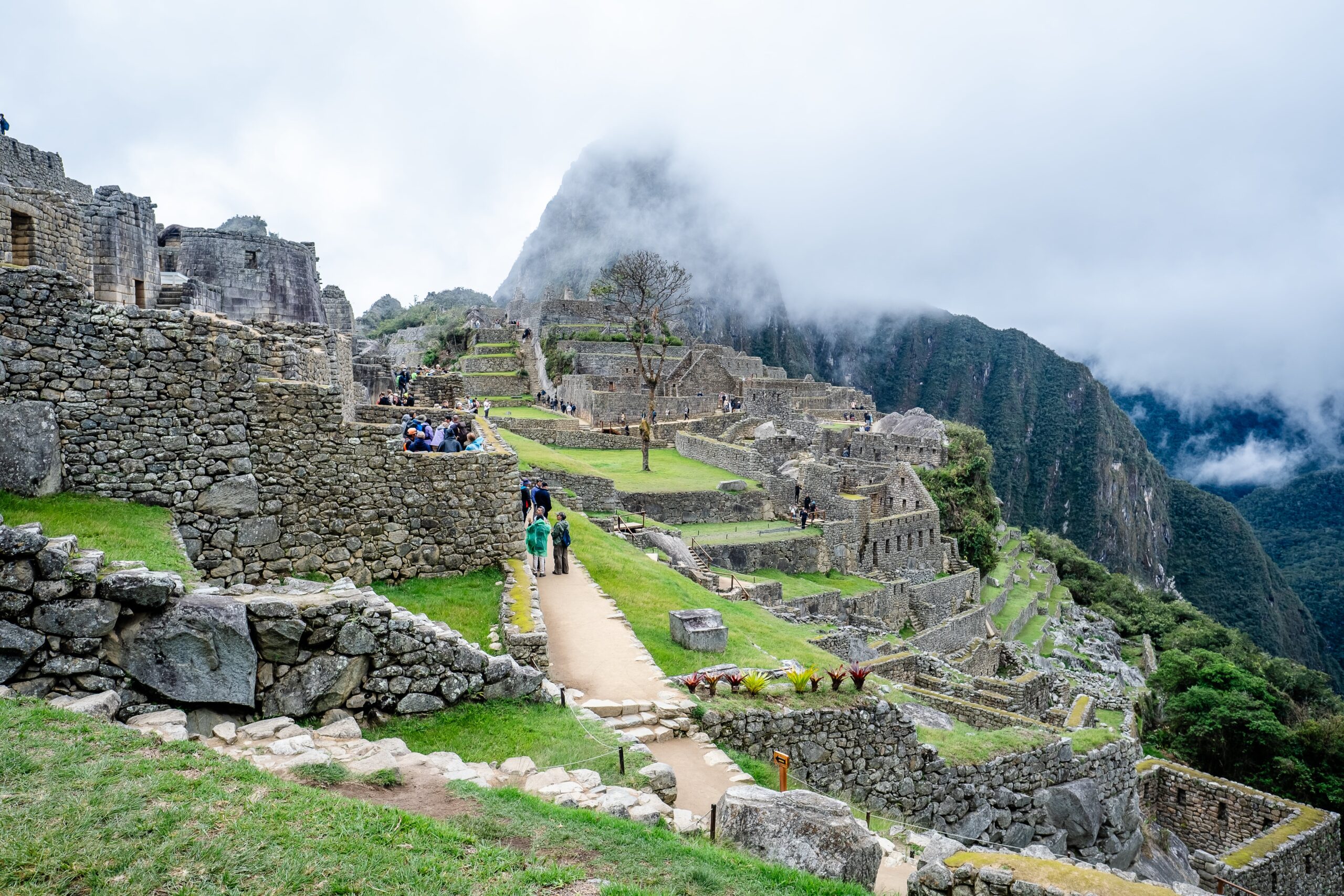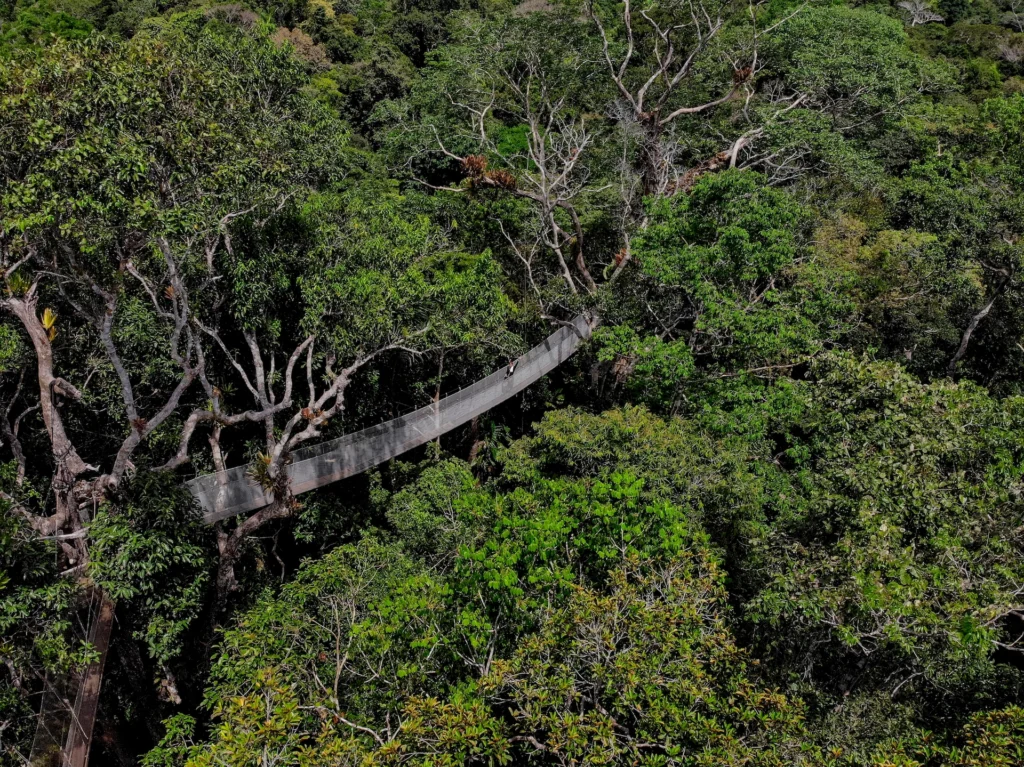
Program Costs
- Tuition
- Room & Board
- Total
Application Deadlines
Resources
The Living Amazon
Students climb from cloud forests to lowland jungles, surveying biodiversity, mapping plant–animal interactions, and tracing how altitude shapes life. From ridgelines they see intact canopy stretching in one direction and fields newly cleared for timber and oil in the other. Each trek carries the tension that the world’s richest forests are also among its most endangered. Each dataset transforms from numbers to evidence in a struggle that links Amazon futures to global survival. The days are also filled with joy: the flash of macaws in the trees, river otters floating downstream, and the discovery of rare orchids, sometimes right beside you.
- Track pink river dolphins at the Amazon’s birthplace, logging GPS coordinates, group size, behavior, and water conditions.
- Survey biodiversity turnover from Andes to lowland by establishing permanent GPS plots, cataloging vegetation, and deploying climate loggers.
- Record ancestral medicinal plant knowledge with Indigenous women healers, noting preparation methods, habitat conditions, and oral histories.
- Ground-truth a contested logging frontier, setting waypoints at boundary markers, interviewing forest guardians, and mapping disputed areas.
- Conduct Directed Research: frame a stakeholder-driven question, collect and analyze field data with faculty guidance, and present actionable findings to local partners.
Academics
This academically rigorous program follows a five-day/week schedule. Each program combines theory learned during classroom sessions with field-based applications. The interdisciplinary curriculum is designed to help students actively discover and understand the complexities of environmental, social, and economic issues in Peru.
Major academic themes include:
- Climate change and conservation practice
- Landscape ecology and habitat fragmentation
- Biodiversity assessment
- Forest health and recovery
- Indigenous knowledge and histories
- Ecosystem services and carbon markets
- Impacts of development in the Amazon
- Biogeography
- Political ecology
Courses
On the Living Amazon program, you will take three 4-credit disciplinary courses, one 2-credit language and culture course, and a 4-credit capstone Directed Research course. Courses are participatory in nature and are designed to foster inquiry and active learning. Each course combines lectures, field exercises, assignments, tests, and research. All courses are taught in English.
Language, Culture, and Society of Peru
This course provides two integrated modules: Spanish language instruction, and Peruvian society and culture. The language module offers listening, oral, and written practice of Spanish to increase students’ communication and comprehension skills. The sociocultural module is designed to help students gain experience in the culture and therefore become more adept at working effectively in their community-based Directed Research efforts. Both modules emphasize the understanding of, and direct interaction with, the local communities with which the Center works. This exposure to culture and language is reviewed and processed through lectures, field exercises, community outreach, and classroom discussion.
Conservation Science and Practice in Peru
This course introduces the concepts, tools, and incentives to effect conservation of the environment and natural resources. The field of conservation is focused on protecting biological diversity—including ecosystems, species, and genetic diversity—by promoting processes, both ecological and social, that support biodiversity. The course focuses on five core themes: what biodiversity is; why biodiversity is important; threats to biodiversity; strategies for conservation; and the concept of sustainability. We explore the practical aspects of conservation using local case studies, considering the array of conservation strategies in the region, and using this lens to evaluate global concerns on a local scale.
Tropical Ecology of the Amazon
This course examines biodiversity from multiple scales, including region, landscape, ecosystem, community, species, and genes. Students learn to: identify and characterize a variety of the diverse flora and fauna in the Amazon region, understand the patterns and processes that support this diversity, and appreciate the importance of biodiversity to people. Students examine the fundamental principles of tropical ecology through the study of a diverse mosaic of ecosystems, habitats, and species along elevational gradients, successional gradients, and geomorphic patterns.
Political Ecology of Peru
This course focuses on human interactions with and impacts on local natural systems, and vice versa. We consider these interactions through the interdisciplinary lens of political ecology, examining the political, economic, social, and historical factors of environmental issues and changes. The course provides the conceptual and practical skills and tools to critically examine and assess the human-environment nexus by exploring distinct cultures and socioeconomic systems from the upper Andes to the Amazon basin. We also consider the theories and ethics of sustainable and unsustainable development, and the need to view these issues in ways that are inclusive and just.
Directed Research – Peru
This course prepares students to distinguish hidden assumptions in scientific approaches and separate fact from interpretation, cause from correlation, and advocacy from objectivity. Students learn specific tools including: experimental design; field techniques; basic descriptive statistics; and parametric and non-parametric quantitative analysis. Emphasis is placed on succinct scientific writing, graphic and tabular presentation of results, and effective delivery of oral presentations.
Core Skills
You will gain practical skills in the field such as: species identification and population monitoring, biodiversity and habitat surveys, research plots and transects, interviewing and mapping techniques, conservation strategy assessment, basic Spanish language skills, research design and implementation, quantitative and qualitative data collection and analysis, and research presentation.
Field Sites
You will visit different ecosystems and communities which may include tropical lowland rainforests, wildlife sanctuaries, protected reserves, Amazonian riverine ecosystems, high-elevation forests and the highlands of the Andes, traditional medicinal gardens, high-elevation montane and cloud forests, rural villages and agricultural communities, and floodplain forests.
Other Peru Programs
The Living Amazon
More Information
Program Costs
- Tuition
- Room & Board
- Total
Amazonian Plant Biodiversity and Traditional Medicine
More Information
Program Costs
- Tuition
- Room & Board
- Total

